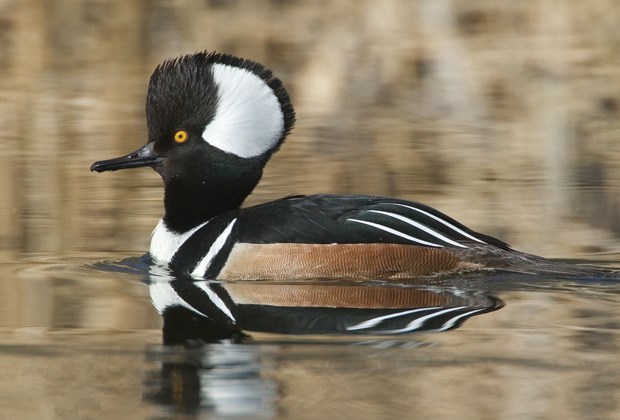Winter on the North Shore offers many wonderful birding opportunities from a fine diversity of waterfowl to raptors and small birds.
You can go snowshoeing in the mountains to look for treasures like the pine grosbeak, white-winged crossbill or grey-crowned rosy-finch. There are trails to explore, like those at the Conservation Area at Maplewood Flats' Otter Point and west pond.
Interestingly there were otter signs at Otter Point recently, a traditional haul out for otters. From Otter Point you can watch for ducks, like the harlequin, northern pintail, gadwall, American wigeon and green-winged teal. There is a viewpoint alongside the salt marsh, which is out of bounds for human traffic due to the sensitive nature of the vegetation. But here you can search for raptors like the merlin, peregrine falcon, Cooper's hawk, red-tailed hawk, and bald eagle. Shorebirds you might encounter here include the black oystercatcher, killdeer, and spotted sandpiper (rare in winter). Offshore, watch for loons, grebes and cormorants.
Freshwater ponds - like Maplewood's west pond and Ambleside's duck pond - are good places to watch for interesting ducks like the ring-necked, bufflehead, common goldeneye, scaup (lesser and greater) and mergansers (hooded and common). The red breasted merganser, a third sawbill species, is more commonly seen in marine habitats.
Mergansers are called sawbills because their bills have serrated edges to grasp slippery fish, their chief food. Other waterbirds seen in fresh and salt water habitats are grebes, loons and cormorants. The piedbilled grebe (fresh/brackish water), and the horned grebe (saltwater) are our two most commonly seen species, but watch also for western, eared and if you're very lucky, Clark's.
The common loon, known as the great northern diver in Europe, is our most common North Shore loon species but from time to time birders are rewarded by sighting a red-throated loon or Pacific loon, especially off the public pier at Ambleside. Be aware that grebes and loons are in their winter plumages until spring. For example, the red-throated loon doesn't have a red throat in winter and the common loon doesn't look like the bird on the Loonie coin. With a little practice however, they're not hard to identify.
In winter, the North Shore's streams offer some very exciting birding, in particular, sightings of the American dipper. The dipper or water ouzel is a remarkable songbird that is right at home in frigid swirling streams. It will often jump right into rapids, hopping onto a rock downstream. Naturalist John Muir called the dipper the hummingbird of blooming waters. It does not have flashy plumage but it's one of the most beautiful songsters of all birds. Its babbly cheery voice is simply amazing. The Capilano, Seymour, and Maplewood Flats' McCartney Creek are three good areas to watch for the ouzel. Insect larvae (stoneflies, caddis flies) are some of its main foods, but don't be surprised to see one come out of the water with a fish. A songbird that fishes, it's true! Another habitat to explore for winter birds is the tidal flat, like Maplewood Flats' mud flat. Time spent here can be rewarding as you scan the ducks, geese, gulls and more. Ducks seen in shallow water, like the mallard, pintail, wigeon, and green-winged teal are sometimes called paddle ducks. Others, like the goldeneyes, scaup, and scoters are called divers and occupy deeper water.
Check carefully through the gulls because they're not all the common Glaucouswinged variety.
You can often spot mew, ring-billed, California, and, if you're lucky, a Thayer's or maybe a herring gull. Identification is either fun or frustrating no matter how you look. It can be frustrating because gulls hybridize - is it a Thayer's or a western/glaucous wing cross? Flocks (gaggles?) of Canada geese are often seen on the flats. Look through them carefully for a Canada-like bird that is much smaller and darker - this will be a cackling goose, created when the Canada was split into two species.
Whether hiking, strolling, snowshoeing or cross-country skiing, it's always great to enrich your outdoor experience by observing mother nature in all her beauty and drama. Take lots of pictures, and watch for those snow fleas along mountain trails (don't worry they don't bite - they're actually springtails).
Watch the weather, dress warmly and keep safe. Al Grass is a naturalist with Wild Bird Trust of British Columbia, which offers free walks at the Conservation Area at Maplewood Flats on the second Saturday of every month. The next walk will be Saturday, Jan. 11 at 10 a.m. where those in attendance will search for winter birds and mammals. Meet at Wild Bird Trust's site office, 2645 Dollarton Hwy. (two kilometres east of the Ironworkers Memorial Second Narrows Crossing). Walks go rain or shine.



